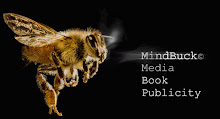
Head Off & Split: a fishmonger’s phrase for removing the head and other traditionally unwanted parts of a fish at market. Nikky Finney’s Head Off & Split is the power to cut and carve away; a power often abused to skew history in favor of the privileged. After all, “History does not keep books on the handiwork of slaves.”
In Head Off & Split, Finney takes hold of the blade. She keeps the glassy eyes and soft innards of American history. With a cadence that has the “strength & sway” of velvet, she retrieves details that white male dominated America would rather do away with. Situated at the intersection of race, class and sexuality, the collection comments on contemporary racial politics, explores the intimacies of lesbian relationships and interweaves the personal with history, culture and politics.
Finney uses humor to stab at the dark and disturbing racial tensions and social injustices in modern U.S. history. In “Left,” rescue efforts after hurricane Katrina seem to be guided by the children’s counting game of Eenee Menee Maine Mo while a helicopter merely circles a family stranded on a roof:
After all, it was only po’ New Orleans,
old bastard city of funny spellers. Nonswimmers
with squeeze-box accordion accents. Who would
be left alive to care?”
Several historical and contemporary figures take center stage in Finney’s poems. The story of Rosa Parks is a familiar if not overdrawn anecdote of the civil right’s movement. However, in “Red Velvet” Finney allows Rosa her identity as a woman and a seamstress. The sonnet sequence “Plunder” and “The Condoleezza Suite” are cameos satirizing George W. Bush and Condoleezza Rice. These figures are portrayed as flashy and blunt as stage-daggers. Finney’s absurdist humor exposes the gap between the key players in the White House and the spectators wading through the mud. In “Concerto no. 12: Condoleezza Visits NYC {during hurricane season},” a pair of shoes in a shop watches a flood on TV and reflects on the Secretary of State:
Such a lovely arch – but after
Two terms – not much support left.
The world always wants to see blood
gush from a turnip. But not me. No sir ree.
I knew from Inauguration #1
she was not the kind to trade places
(even in her mind ) with anyone held hostage
on a roof by good old army corps levee water.
Her exquisite Saint John suits shouting into
the television screen: “Stranded bodies &
hard-headed water are not my department!”
Finney explores the human need and capacity for love through a series of poems at the heart of Head Off & Split. We are made aware of the self-reproach and danger of homosexual love in a predominantly heteronormative society. In “Aureole” she writes, “I stop my hand in midair. /If I touch here there everything about me will be true /… I will be what Brenda Jones was stoned for in 1969.” The slippery innards of queer relations in America rest within the soft stomach pouch of Finney’s fish reminding us that Head Off & Split is a collection of poems for the silenced.
Finney’s final poem is an empowering message to “Brown Poets”. She instructs them to “Be camera, black-eyed aperture. Be diamondback terrapin, the only animal that can outrun a hurricane. Be 250 million years old. Be isosceles. Sirius. Rhapsody. Hogon. Dogon. Hubble. Stay hot.” Finney encourages the poets to shatter physically and historically imposed boundaries and to be observant and aware of their world.
She demands from them: “Careful to the very end what you deny, dismiss and cast away.” This reminder serves any poet who believes in the power of words to uplift, enlighten and restore.
(This collection won the 2011 National Book Award for poetry )
A review by Anika Ledlow and Kritish Rajbhandari















